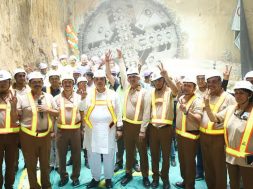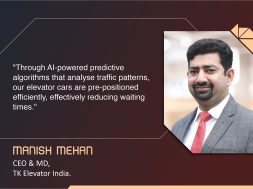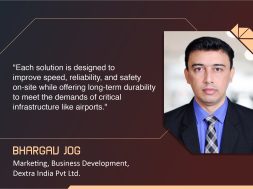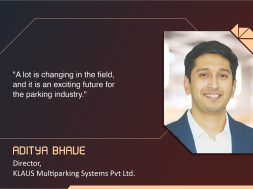Decoding the idea of Smart Cities

With no available definition the secret behind this elixir of smartness remains closely guarded believes Arijit Sen.
As an urban planner what is your idea about smart cities?
India is booming with sounds of cranes, wrecking balls, pile drivers, earth movers and cement mixers working tirelessly to provide smart infrastructure, smart traffic, smart travel, smart access, smart economy, smart open spaces, smart governance and Even smart living – basically smart cities.So, up until today, were cities confused, lost, or daft?
Has the Smart Cities Mission been set up to give hope to such cities to better understand how city dwellers live, play, interact, travel, work, or die? Does the initiative imply that for centuries Indian cities have been functioning with callous wasteful erratic haphazard thoughtless decadence, that will ‘finally’ transform into efficient environments functioning with machine-like precision? The concept baffles me!
How effective are the Smart City Planning Tools?
With no available definition the secret behind this elixir of smartness remains closely guarded. However, internet expands smart as a Self-Monitoring, Analysis and Reporting Technology (S.M.A.R.T.). Basically, another technocratic tool for seeing cities as statistics. First, break down a city into quantifiable components – energy supply (water, electricity, gas), sanitation, transportation usage, population hot spots, walkable proximity, travel frequencies, traffic management, etc. Second, map these components using other digital tools (such as GIS), and observe trends prevalent in each of them. Third, based on these observations, project/ predict future scenarios and recommend policies/ solutions to address them. This way, the city is expected to become smart enough to deal with future changes. Theoretically, this system appears linear enough to make the city’s infrastructure intelligent. However, as seen world over, when new (sometimes, unprecedented) externalities affect the city, smart systems go awry. Parameters don’t match, system gets overloaded and too many smart thoughts are now confused… chaos ensues.
What has your experience working in the Gulf revealed to you about the concept of Smart Cities?Even in world class Gulf cities smart infrastructure has fallen short on multiple occasions.Recently, there have been major floods despite receiving only 1 in 10 year rain events! The storm water drains overflowed their capacity bringing daily life to a grinding halt, and also impacting the city’s global perception. Even today, the city is unable to efficiently judge what capacity the storm water drains should precisely be.Instead, it mandates conservative capacities resulting in inefficient cost increases.
The Department of Transport uses a Transportation Evaluation and Assessment Model to create traffic models in future master plans. Despite all the Traffic Management Plans and Traffic Impact Studies, the system fails when new developments gain unprecedented popularity. Suddenly, all calculations for determining parking spaces, road planning go haywire. Road engineers then have to catch-up and update all their parameters. It is not the fault of smart systems, it is the random unpredictable human/ nature’s behaviour that is blamed.
The local planning council there, has created a manual for planning essential amenities (community centres, places of worship, schools, municipal offices, etc) within all developments. This manual is prepared using population statistics and walkability limits. However, it does not account for more complex algorithms,such as, project phasing, frequency of sale of residential units, size of family, mix of the family, etc, leading to standardised demandsthat trigger a set number of community facilities. This results in several unbuilt plots (or oversupply as well). Even though this is a novel approach to providing essential amenities for the community, it is the oversimplification of human beings as statistics that draws out personality from most developments.
What is your opinion on the dependence on technology and AI that a Smart City entails?
Unlike machines, we don’t function in binaries. Expecting technology to determine our future habits and habitats would be foolish. Even though these smart systems have a bottom-up approach (their inputs come from fibre-optic cables deep under the ground), there is rarely a direct interaction with city dwellers. All information (read: metadata) is processed in a command centre and then sent out to consultants to project future scenarios. Without any direct human interaction, a twisted bottom-up system and the age-old top down planning approach will never be able to accurately/ efficiently plan cities.Thus, instead of letting the city become a tool for metadata collection, city planners must take charge and plan cities for the inhabitants and their habits. Rather than mapping and surmising behavioural trends, involving city dwellers in the planning process will help gain better understanding of their requirements and go a long way in planning holistically.
How has Covid 19 situation impacted your thought process on city planning?
Today, with the ongoing coronavirus pandemic city planners are seeking ways to plan better and safer. Statistics would suggest high density urban centres are at highest risk. Spreading population away from each other would help flatten-the-curve. However, sprawling outwards would bring a number of equally dangerous issues with it, including increased distance from the healthcare facilities. On the other hand, without disturbing social fabric of the place, it may be prudent to decentralise the services (clinics, water treatment, primary substation, etc) to ensure: easy access to everyone, no overcrowding during peak times, minimal disruption in case any of the utility facilities get infected go under lock-down. Perhaps, the solution may be something different but must be derived from a deeper understanding of the on-ground situation.
S.M.A.R.T is undoubtedly a key driver for efficient city functioning, however, making it the primary planning mission, would be erroneous. Cities are neither smart nor daft – they are complicated. The more we simplify it, the less we learn about it. Indian cities are inherently complex. It is this complexity that needs to be appreciated, understood and celebrated – individually as well as holistically. The Smart Cities behoves upon us, city planners on a mission to awaken, energise and reinvigorate the glorious layers of our cities into responsive, adaptive, accessible places for all.
(The author is an Urban Planner working on public sector projects in the Middle East.Views expressed are personal in nature and in any way do not necessarily reflect those of I-Tech Media or any of its employees or agents.)
Cookie Consent
We use cookies to personalize your experience. By continuing to visit this website you agree to our Terms & Conditions, Privacy Policy and Cookie Policy.









